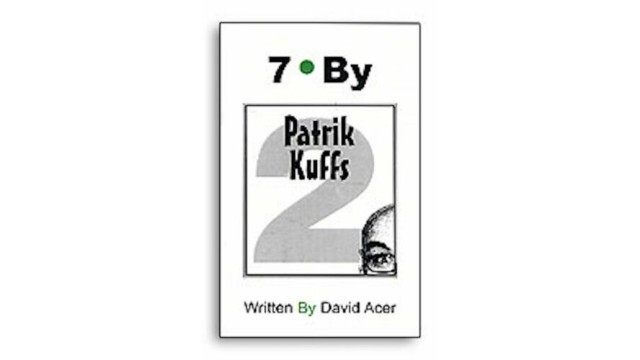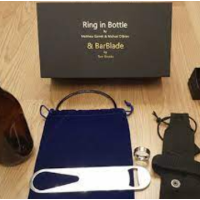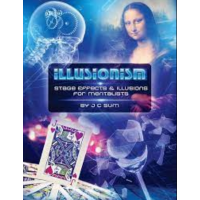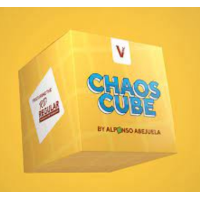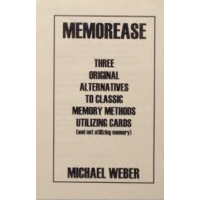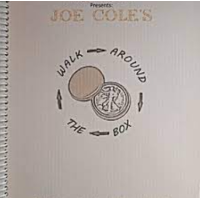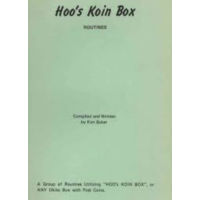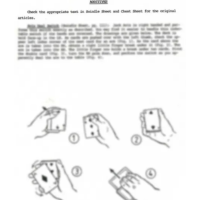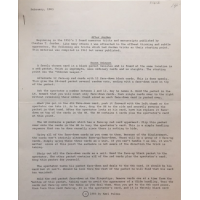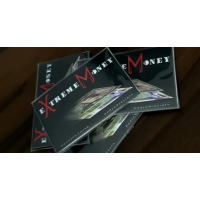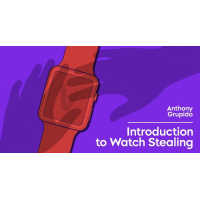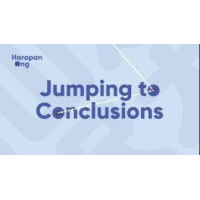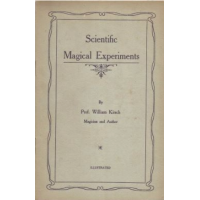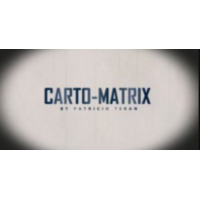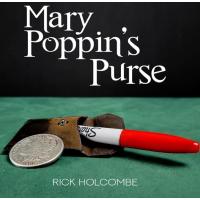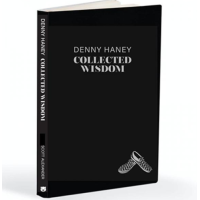7 by Patrick Kuffs provides a tremendous value for the money. The routines are clever, and the descriptions are clearly written. The booklet contains material that has the possibility of playing very big for very little effort. If the effects appeal to you, purchase the booklet. I cannot imagine you will be disappointed with the methods.
French Lint- A card is selected and rubbed onto the magician's close-up pad. The magician introduces a lint remover that will supposedly pick up the D.N.A. of the card. He uses it to clean the close-up pad. When he removes the sticky sheet, the name of the card is revealed in lint. This is a fun idea that could play great for the right performer in the right situation. There are stronger revelations of selected cards, but this has got to be one of the most original.
Under the Table- The performer notices that the table he's working on is unstable. To fix it, he removes a card from the deck, folds it back outwards into quarters, and places it under the table leg. A card is then fairly selected. The deck is tabled and the magician snaps his fingers. Upon dealing through the deck, the selected card is found to be missing. The spectator is then told to remove the card from underneath the table leg. Amazingly, it is the selection.
This is a great piece to be used to frame a routine or show. Begin the routine by using the card to fix the table leg, and end the routine revealing the selection. Patrik's original version is basically self-working and extremely clean looking. However, he also provides a method for performing the routine with a signed card that takes a little more work on the part of the performer, but is completely impromptu.
Temporal Anomaly- Here's the effect. The magician borrows an analog watch. Another spectator also wearing an analog watch is asked to turn the watch dial while holding the watch behind his back to set it at a random time. The magician does the same with the borrowed watch. They bring the watches out from behind their backs without looking at them and trade watches. Finally, they draw the time depicted on each other's watches on two large pieces of paper. When the times are revealed, they match exactly.
Magicians have been performing these type of watch effects for awhile now. Often, however, the apparatus involved can set the magician's wallet back a couple of hundred dollars. This routine can be performed with two borrowed watches and no preparation. Still, this impromptu routine could play on the largest stage. The method is dead easy, but probably will not fool magicians. The routine may not look exactly as clean as it could if a gimmicked watch were used, but the fact that this is impromptu and does not cost the magician a dime makes this worth your consideration. Those interested in these type of effects should check out Richard Osterlind's Watch Routine on L & L Publishing's Mind Mysteries Vol. 1 available from [link removed by eBay]. Richard's routine is also impromptu and does not use a gimmicked watch.
Bottle Royale- Three paper bags are displayed. The performer asks the audience to select a bag. Once done, the magician slams his hand down on the selected bag, crushing it to the table. Again, he asks for a bag to be named, and again he slams his hand down to crush the bag. The unchosen bag is then revealed to contain a broken bottle with the jagged edge pointing up. I won't get into the debate over whether or not this idea was first conceived by Patrik or Scott Alexander. I will only say that the idea is brilliant. In Patrik's version, the audience is unaware of the contents of any of the bags. In this way, they are not aware of the danger inherent in the trick until the end. Some performers may choose to play up the danger element before the effect begins. The matter is one of personal preference, and this idea can be used to accomodate either one. This is something that audiences will surely remember.
Invisible Touch- A spectator places an X on one of the fingers of a picture of a hand drawn on the back of the magicians business card. The mark is seen be no one accept the spectator. The card is then pocketed in a business card wallet. Another spectator is asked to close their eyes and to extend their hand. The magician makes mystic motions around the spectator's hands, but does not come in contact with the spectator. Still the spectator announces he felt something touch one of his fingers. Of course, it is the finger originally marked by the first participant.
This type of routine, when presented correctly, seems very eerie to the audience. The method is dead easy and seems to be completely above board. Of particular note is Patrik's clever ruse to glimpse the information written by the spectator. This could be applied to other effects. The routine will be useful for street magicians as the props needed for the effect are minimal and the spectator reaction far outweighs the work involved. I can imagine this playing well for a TV audience as well.
P.K. Card Stab- This is a clever version of the card stab, but better routines have been published. In effect, a card is freely selected, signed, and lost in the deck. The cards are then spread face down on the table and covered with a newspaper. The newspaper is lifted just enough to allow the spectators to reach under and mix the cards themselves. The newspaper is then replaced and a knife is stabbed at a spectator chosen point. The newspaper is ripped away revealing one card impaled by the blade. Of course, it is the signed selection. The title gives a hint to the method. From a spectator's point of view, I'm not sure this appears any cleaner than most other versions of the effect. However, this does have the added benefit that it fools magicians. In the words of the author, "This routine is far from impromptu. However, for special shows, it's worth the preparation."
Jackpot!- A wine glass holding five opaque envelopes is introduced. The magician explains that the envelopes could contain prizes worth thousands of dollars. Four spectators freely select an envelope, leaving one for the magician. The spectators open their envelopes to find lottery tickets. The magician cleanly opens his envelope to find not only a lottery ticket, but a one hundred dollar bill. Obviously, this is Patrik's take on the classic Bank Night plot. First, there are absolutely no forces and no word play involved. While this is not a blockbuster effect, it makes for a nice self-contained routine that plays big and is fun for everyone involved. Allowing the spectator's to keep the lottery tickets is a nice touch (admittedly borrowed from other performers such as Richard Osterlind and Lee Earle.) It takes away the "sting" involved in other Bank Night type effects while leaving the spectator with something that really could be worth thousands of dollars. Luckily, it only costs the magician one.
The booklet also contains a "conversation" between David Acer and Patrik Kuffs that is simply hilarious. For the price, you're not going to find a much better investment. David Acer's writing style makes the booklet not only informational but entertaining to read. In fact, my only problem with David is that he cannot publish material nearly as fast as I can read it. (Come on, David. Pick up the pace a bit, would ya?) Highly recommended. |

